Krissy Navrat
August 11, 2025
A journey through Saranac Lake’s most unusual moments
There’s no place quite like Saranac Lake, and that’s not just small-town pride talking. This isn’t your typical mountain town. It’s where people once came on purpose to be sick, where an Ice Palace crowns winter royalty, and where icons from Einstein to Mark Twain have left their mark, sometimes quite literally. History here doesn’t just live in dusty archives; it lingers in old cure cottages, dances through winter parades, and occasionally flickers the lights in a haunted hotel.
This village is a place where ghost tales mingle with musical legends, and even a sailing mishap can involve one of the greatest minds in history. From the haunted halls of Hotel Saranac to lawn chair choreography and bootlegging escapades, these stories capture the eccentric, creative, and totally unique spirit that makes Saranac Lake, well, decidedly different. So, if you’re someone who likes your history with a twist, read on—you’re in for a few surprises.
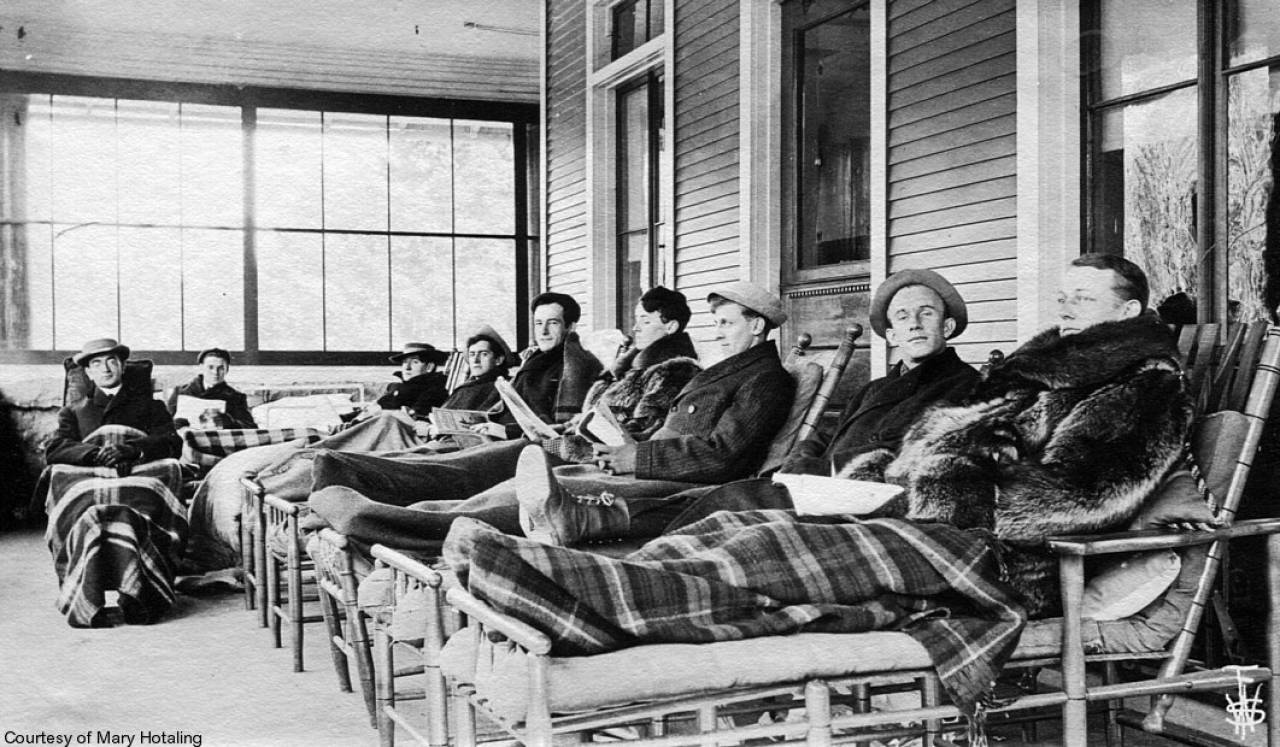
1. Einstein overboard
Albert Einstein may have been a capable sailor, but swimming? Not so much. While summering on Lower Saranac Lake in 1936, the world-renowned physicist was out sailing when his boat overturned. Unable to swim, Einstein was rescued by a local ten-year-old child, Don Duso, who happened to be nearby. True to form, his famously wild hair reportedly looked just as untamed after his unexpected soak.
Despite Einstein’s watery mishap, Lower Saranac Lake remains one of the region’s most scenic and enjoyable places to paddle. With its calm waters, forested shoreline, and access to a network of connected lakes and campsites, it’s a favorite for kayakers, canoers, and casual boaters alike. Just remember to bring a life jacket, because even the most brilliant minds can find themselves in over their heads.
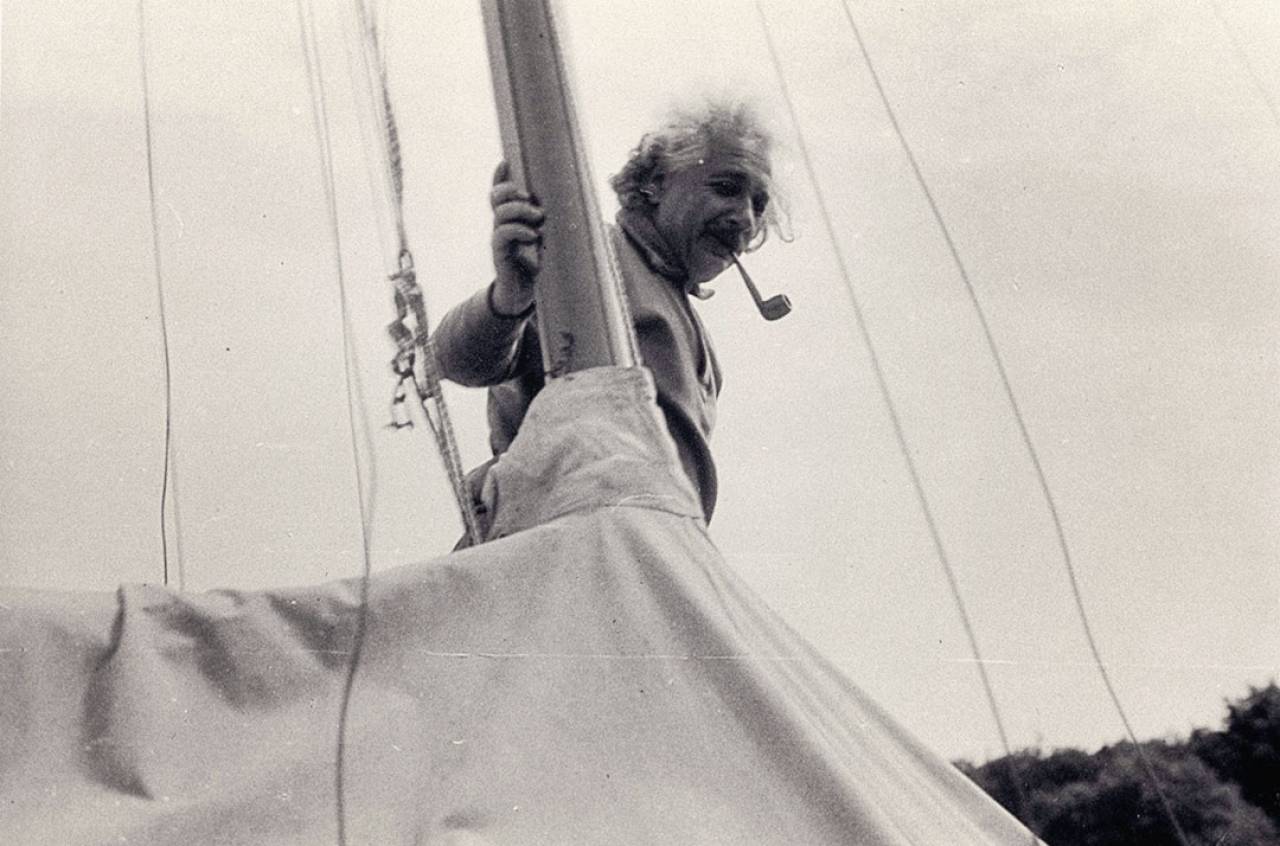
2. Haunted Hotel Saranac
Opened in 1927, the Hotel Saranac is a downtown landmark and, according to some, a paranormal hotspot. Over the years, both guests and staff have reported eerie encounters: unexplained footsteps echoing down empty hallways, lights flickering with no electrical cause, and sightings of a mysterious woman in white who vanishes just as quickly as she appears. Whether you’re a skeptic or a believer, one thing’s certain: a night at the Hotel Saranac might come with more than just turndown service.
Despite its spooky history and ranking among the top ten most haunted hotels in America, the Hotel Saranac remains a beloved place to stay, especially for history buffs and curious travelers looking to add a little flair to their visit. Its grand architecture and rich legacy make it more than just a hotel; it’s an experience. Guests can unwind at the elegant Great Hall Bar, a cozy spot for craft cocktails and conversation, complete with a balcony patio that offers charming views of the village below and a perfect perch for soaking in the spirit of Saranac Lake, haunted or not.
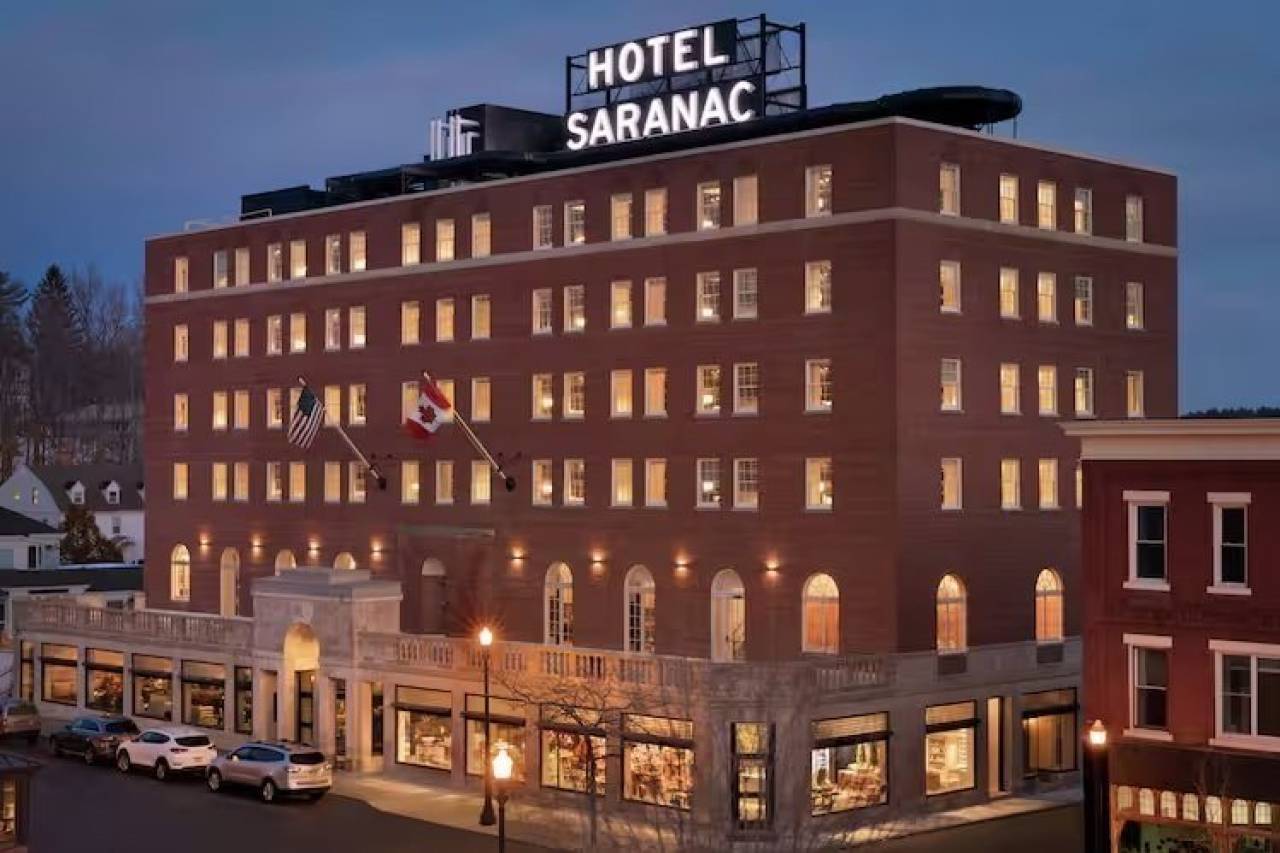
3. Winter carnival weirdness
Saranac Lake doesn’t just survive winter, it throws a full-blown party in its honor. Since 1897, the Saranac Lake Winter Carnival has turned frigid temperatures into festive fun, earning the title of the oldest winter carnival in the eastern U.S. At the heart of the celebration is the iconic Ice Palace, built each year by volunteers from giant blocks of ice harvested from frozen Lake Flower. But the weird and wonderful doesn’t stop there. From the precision performances of the Lawn Chair Ladies to the competitive pan throwing contest, the parade is packed with quirky charm. Ice royalty, wild costumes, and a joyful dose of absurdity make Winter Carnival a delightfully eccentric celebration of Saranac Lake.
Each year, the Winter Carnival embraces a new theme, inspiring everything from parade floats to palace décor. In 2024, the village rocked out with a “Music Legends” theme, while 2023 took a spookier turn with a creepy carnival motif, complete with skeletons and a winterized Halloween takeover. Looking ahead, the 2026 Winter Carnival will run from February 6–15, and the theme is shaping up to be a playful one: Cartoonival. Expect animated fun, bold colors, and plenty of nostalgic nods.
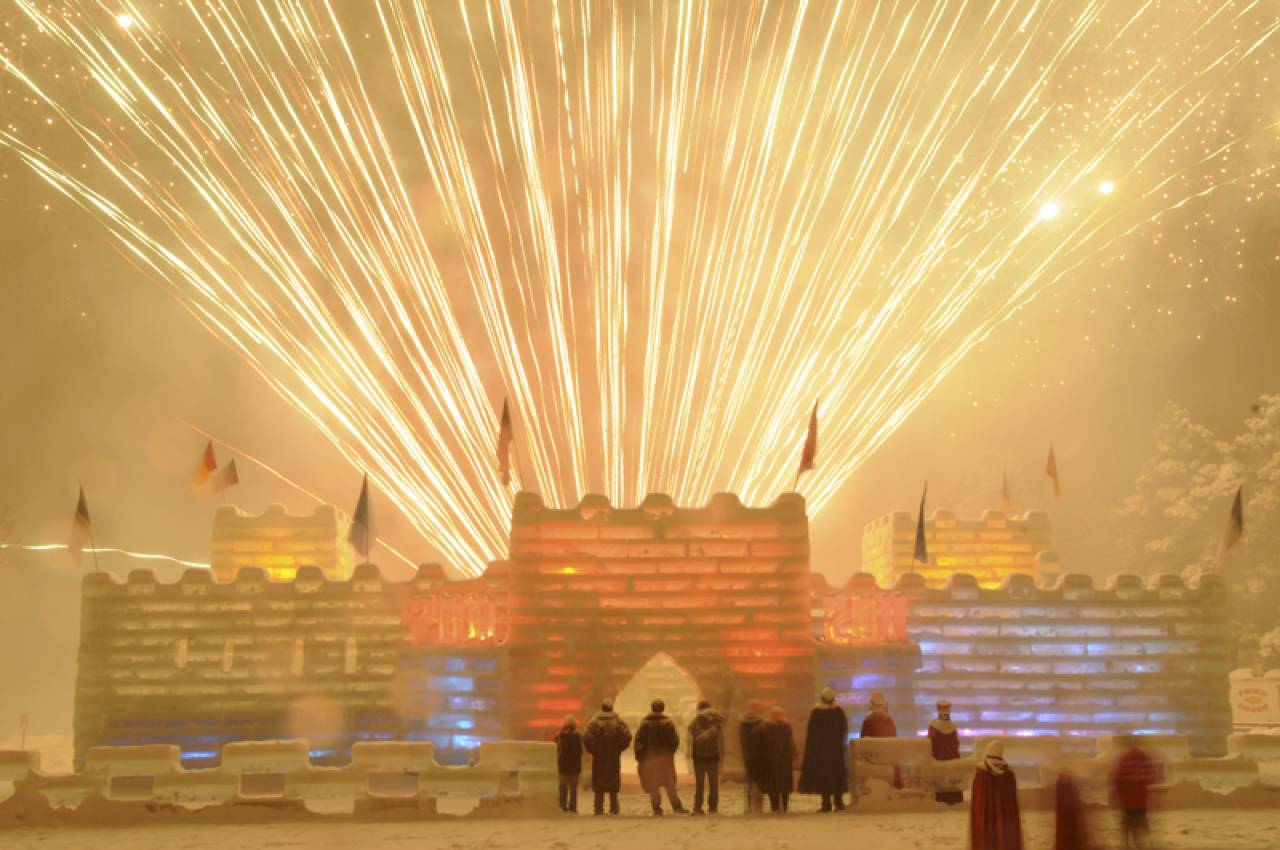
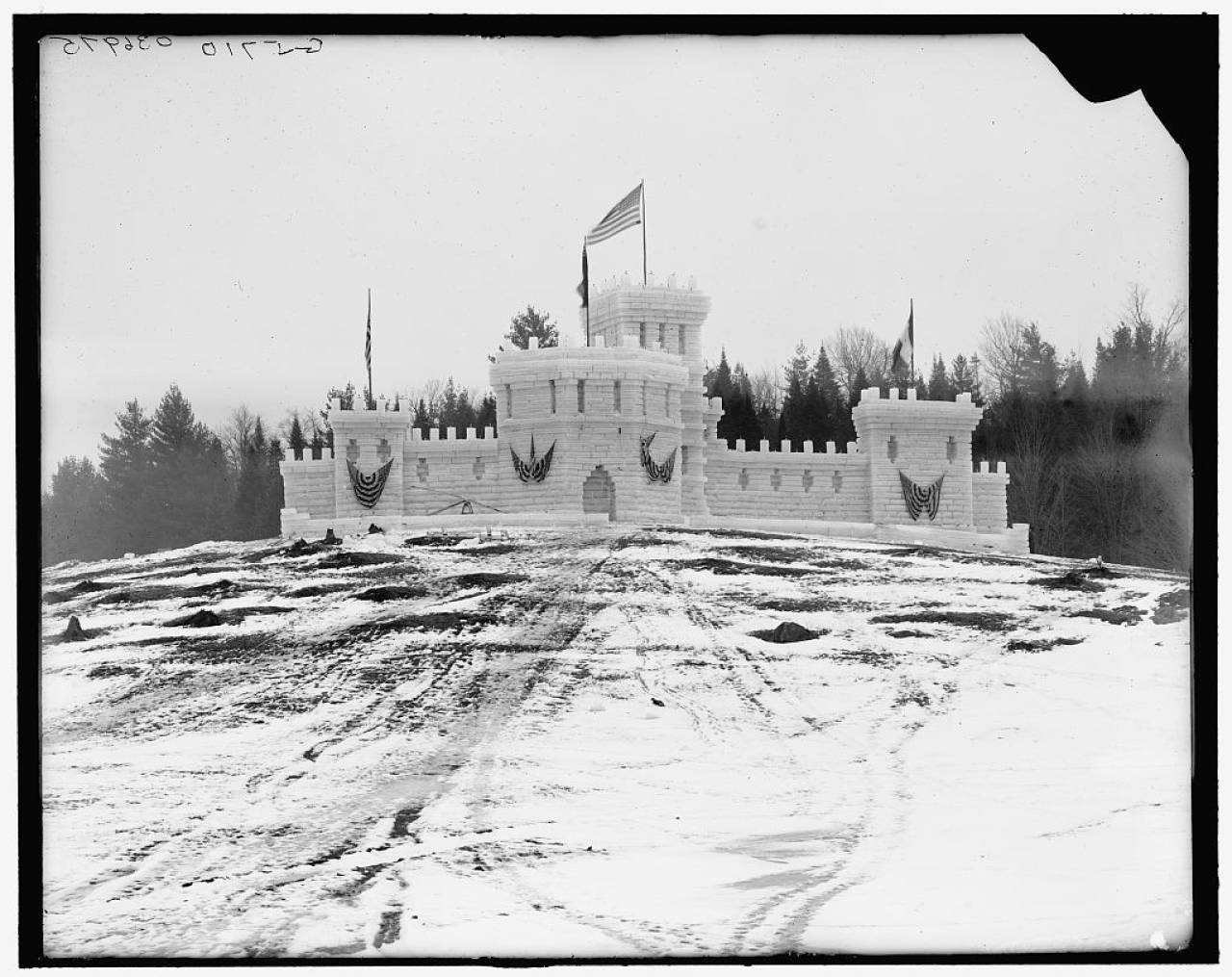
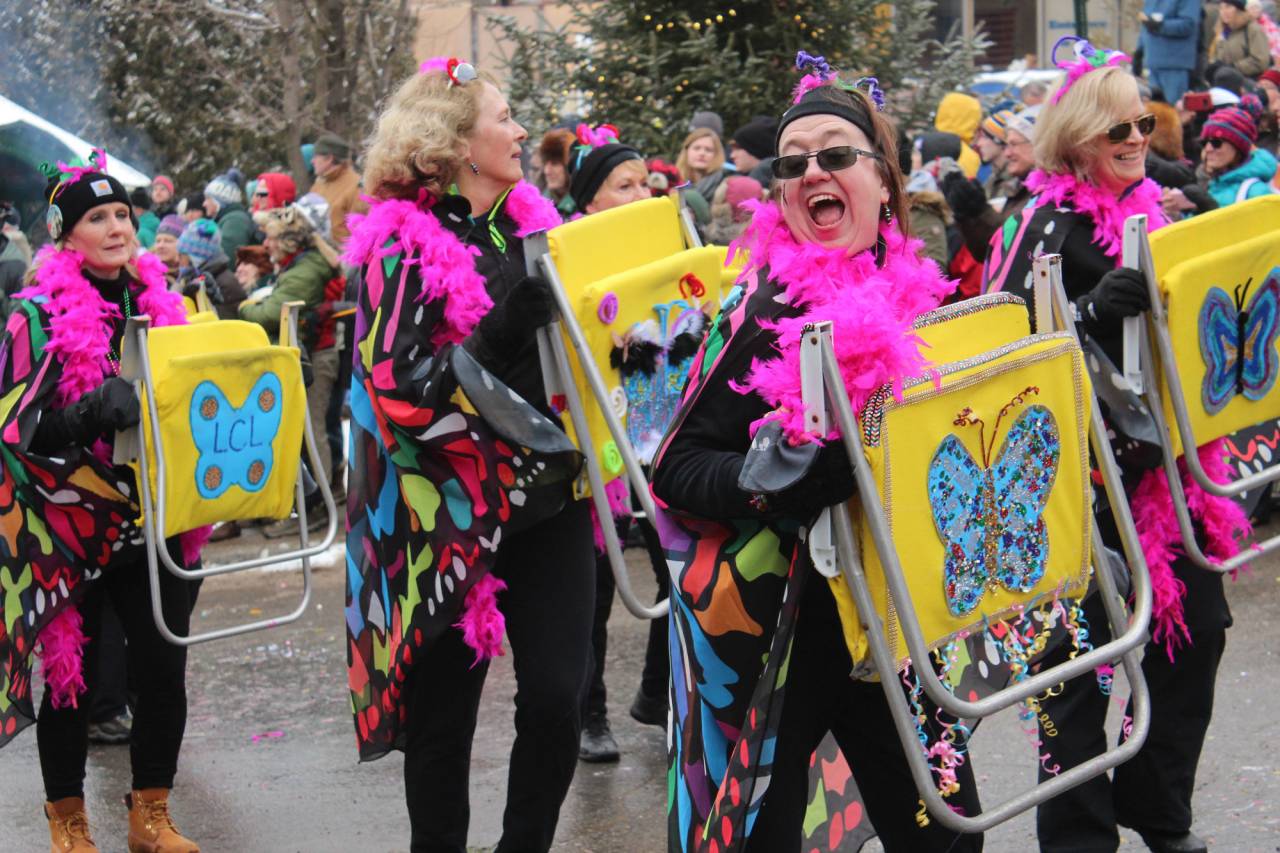
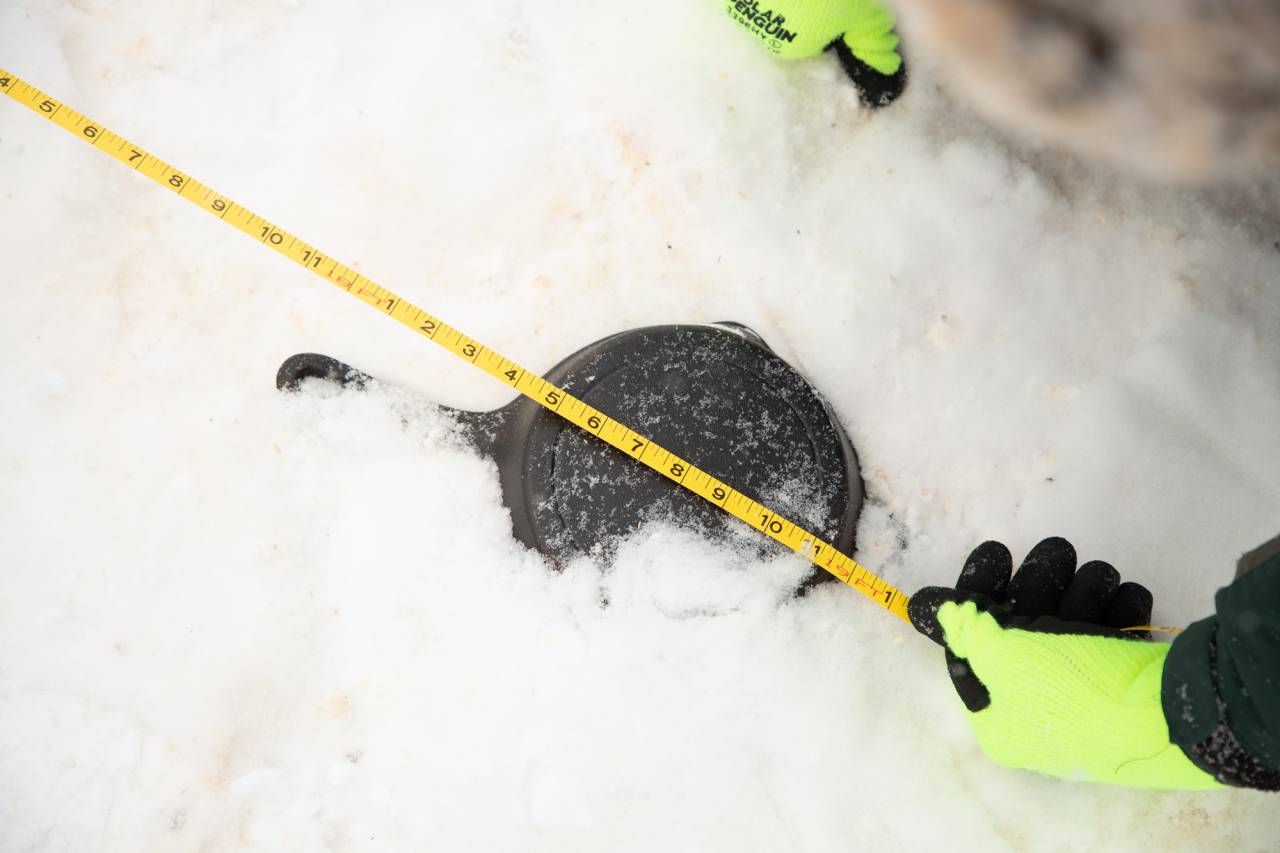
4. Tuberculosis and the fresh air cure
While most towns dreaded the arrival of contagious disease, Saranac Lake rolled out the welcome mat. In the late 1800s and early 1900s, it became a renowned center for the treatment of tuberculosis, drawing patients from across the country in search of the so-called “fresh air cure.” The idea? That rest, crisp mountain air, and good nutrition could help tame the deadly illness.
Sanatoria and “cure cottages” sprang up throughout the village, many outfitted with wide porches where patients would recline, bundled in blankets, breathing deeply, and yes, often coughing, in all seasons—even during bitter -20°F winters. What might sound grim today turned Saranac Lake into a hub of medical innovation and quiet resilience. Some patients stayed a few weeks; others never left, becoming part of the fabric of a village unlike any other.
Want to step into this fascinating history for yourself? Visit the Saranac Laboratory Museum, located in the original 1894 lab of Dr. Edward Livingston Trudeau, the physician who pioneered the fresh air cure.
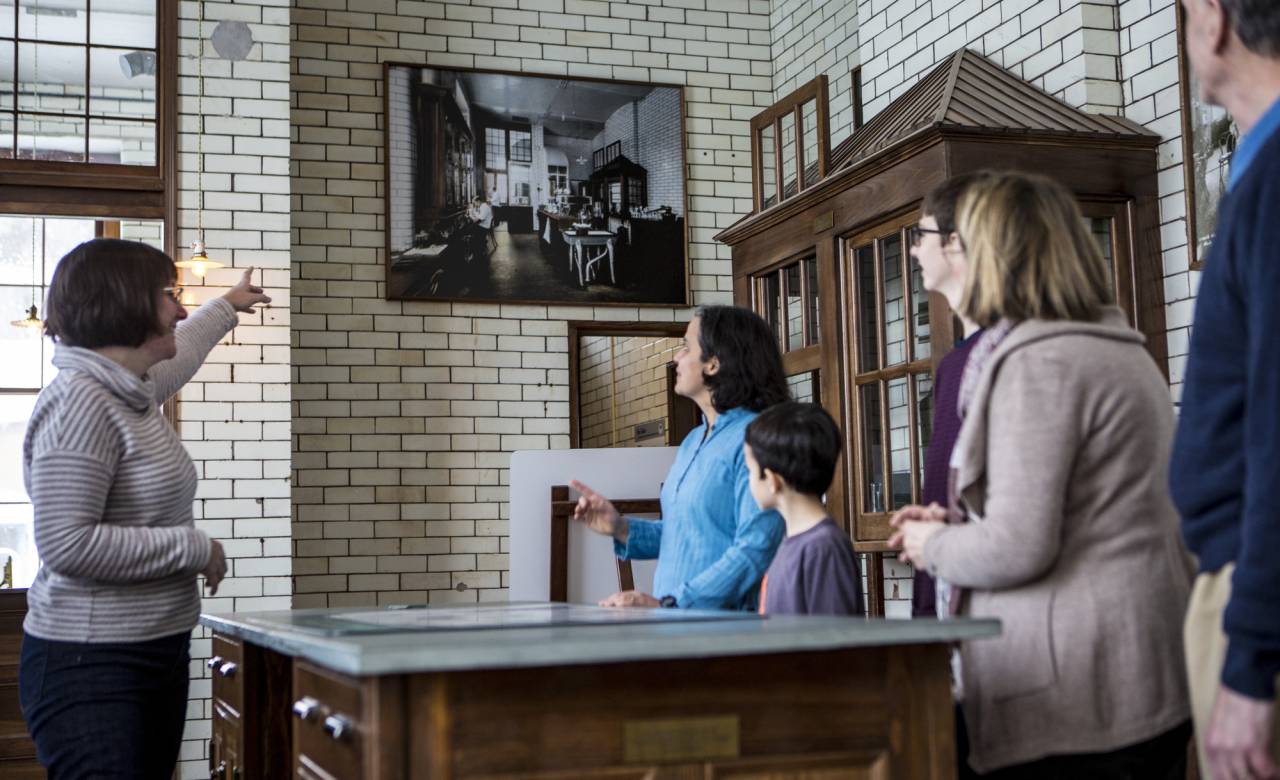
5. Mark Twain's "Lair" on the lake
In the summer of 1901, Mark Twain, born Samuel Clemens, retreated to a rustic lakeside cottage he lovingly dubbed “The Lair” on Lower Saranac Lake. Here, he wrote A Double‑Barreled Detective Story and entertained his trademark brand of wit. He famously laughed off a package addressed to “Mr. S.L. Clemens. The Liar. Lower Saranac Lake” and signed letters simply “Ampersand,” after the bay where he stayed.
Today, guests have the rare opportunity to step into Twain’s Adirondack escape. The Mark Twain Camp, once his cherished summer retreat, is now available for rent, marking its first public availability in over a century. Located on the shore of Lower Saranac Lake, the property offers four bedrooms, a cozy boathouse, lakeside swimming access, and a canoe to explore the water, just as Twain did.
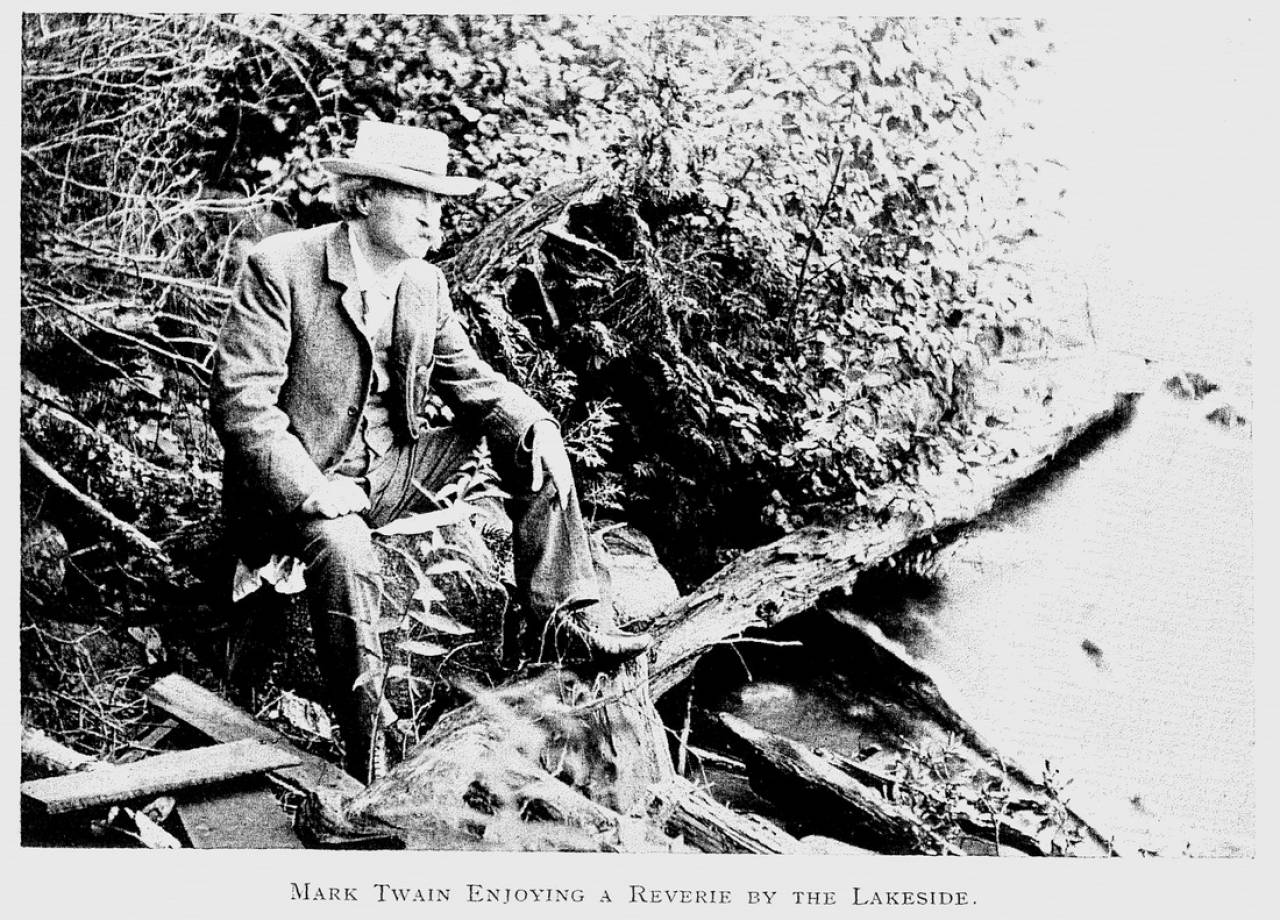
6. A composer in the woods
In 1943, Hungarian composer Béla Bartók, battling leukemia and exile during World War II, found refuge in a modest cabin near Saranac Lake. Amid the quiet Adirondack woods, he composed two of his final and most celebrated works—Concerto for Orchestra and Sonata for Solo Violin—masterpieces full of energy and emotion despite his failing health.
Far from the grand concert halls of Europe, Bartók found inspiration in the quiet beauty of the North Country. His legacy lingers in those woods, where music once poured from a cabin under the trees. Nearby, the Saranac Laboratory Museum features exhibits on the region’s rich cultural history, including stories of notable residents like Bartók. If you’re inspired to dive deeper into the arts, Saranac Lake’s vibrant community hosts concerts and events year-round, including performances by the Lake Placid Sinfonietta and classical music concerts held at the historic Hotel Saranac.
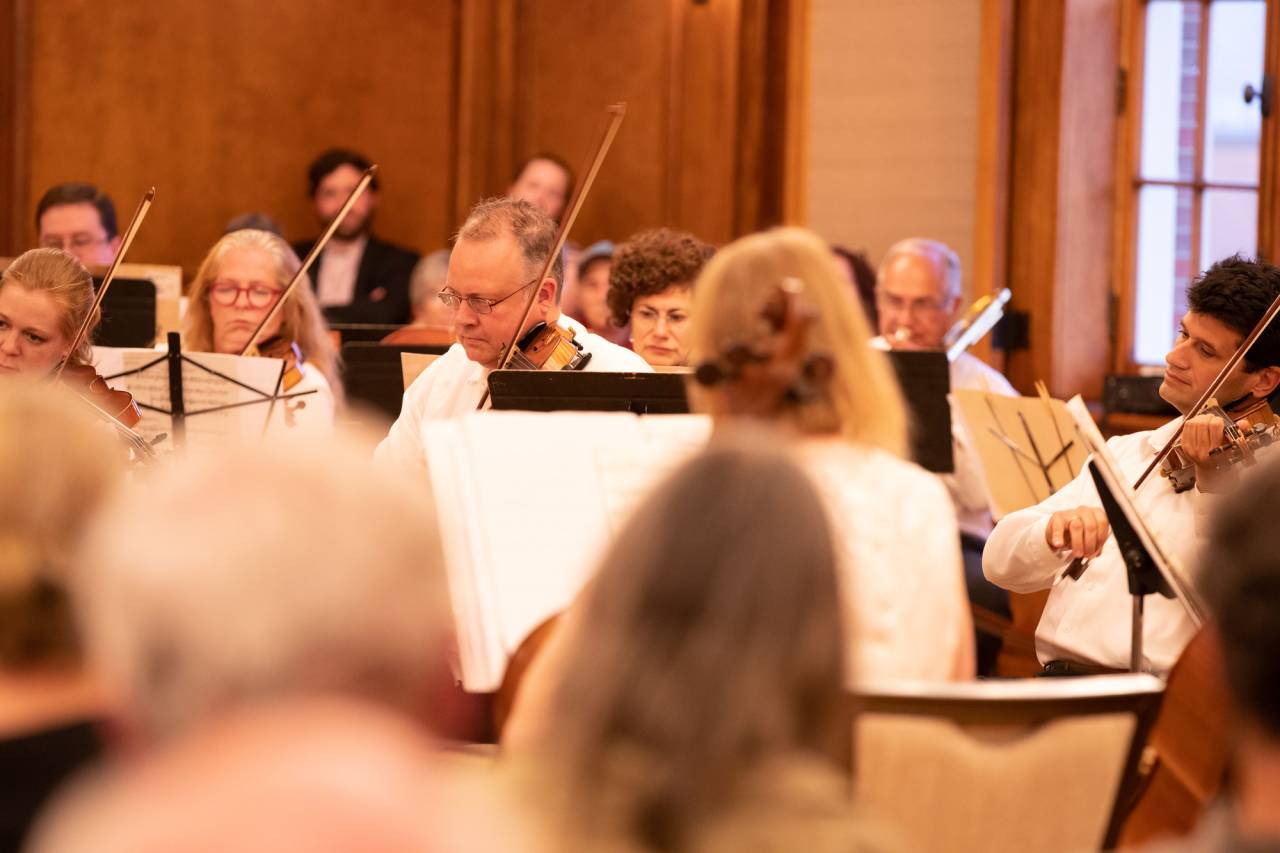
7. Rum-running and rebellion
During Prohibition, Saranac Lake’s close proximity to Canada made it a prime hub for rum-running and bootlegging. Smugglers funneled illegal liquor across the border, and hidden stills within the village kept the supply flowing.This chapter of Saranac Lake’s history adds a rebellious edge to its charming small-town vibe, revealing a time when the quiet Adirondack village was anything but ordinary.
For a taste of that Prohibition-era intrigue, take a short drive to Lake Clear Lodge and Resort, where you can book a 1920s Speakeasy Dinner Experience. With hidden doors, vintage cocktails, and period-inspired dishes, it’s an immersive way to step back in time and toast to the Adirondacks’ spirited past.
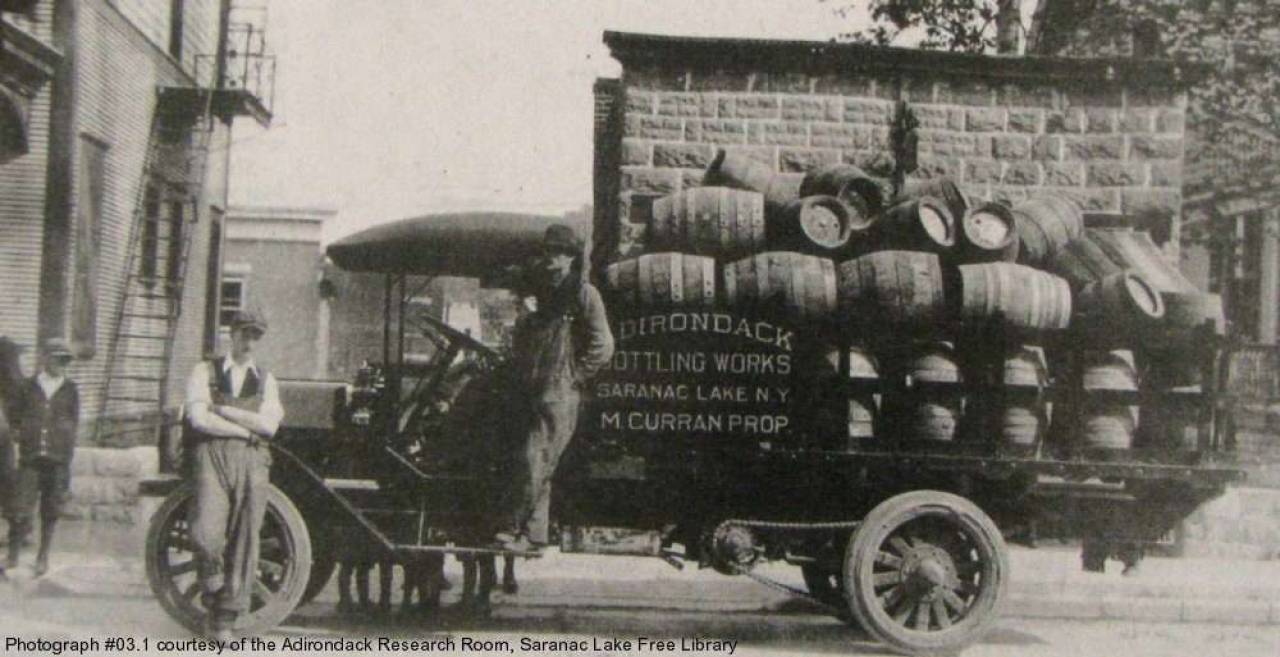
8. President Coolidge’s Adirondack getaway
In the summer of 1926, President Calvin Coolidge swapped the bustle of Washington for the quiet beauty of the Adirondacks, making White Pine Camp on Osgood Pond his official summer White House. Located just outside Saranac Lake near Paul Smiths, the camp offered a serene retreat complete with extensive grounds, a private bowling alley, tennis courts, and even a Japanese Tea House.
Today, visitors can step into history by touring White Pine Camp or even staying overnight in one of the very same cabins once occupied by the Coolidges. It’s a unique opportunity to experience presidential luxury, Adirondack-style.
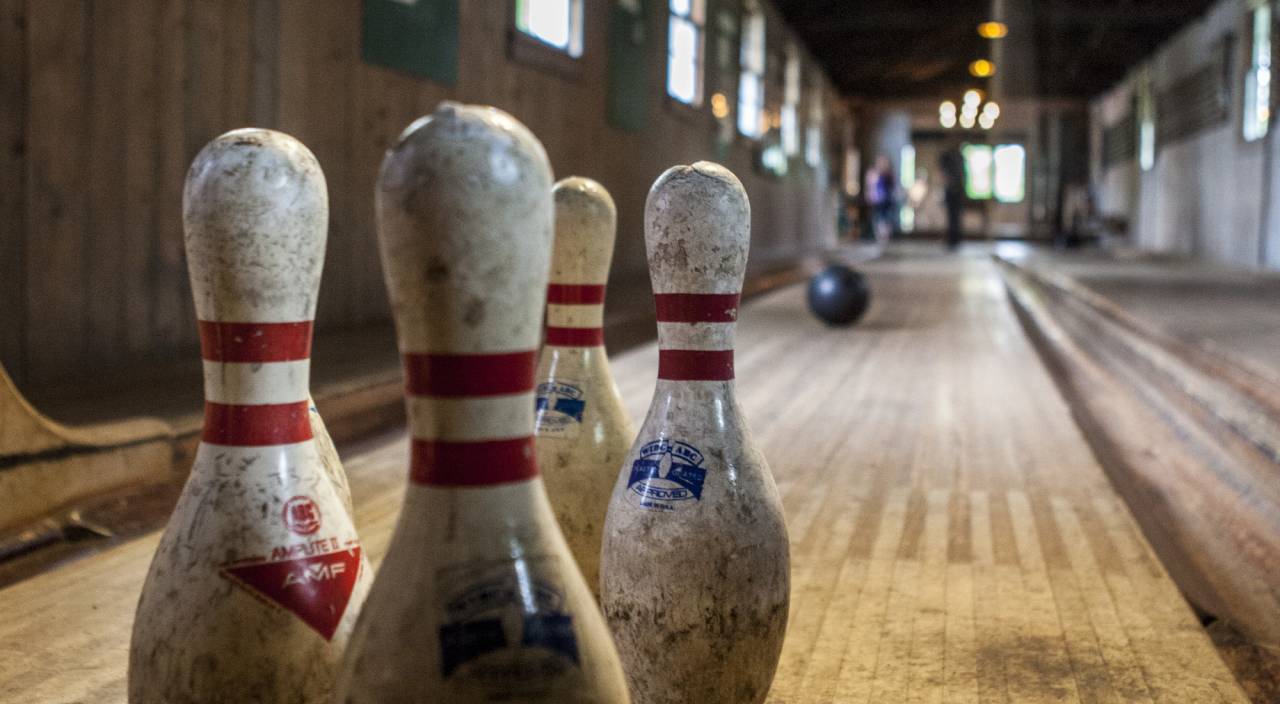
9. Lana Del Rey’s Saranac Lake connection
Saranac Lake isn’t just rich in history, it’s quietly woven into modern music culture as well. Lana Del Rey, born Elizabeth Woolridge Grant, shares a personal tie to the village through her father, Rob Grant, who owns a real estate business in town.
Rob, a lifelong music lover, even collaborated with Lana on “Sweet Carolina,” the final track of her eighth studio album, Blue Banisters. He keeps a piano in his office on Broadway in downtown Saranac Lake—a charming reminder of his enduring connection to both music and the village.
And if you’re more into amps than atmospheric ballads, Saranac Lake’s local music scene is alive and well. From live concerts at the Waterhole to outdoor shows and cozy music shops downtown, there are plenty of ways to tune in and experience the village’s ever-evolving sound.
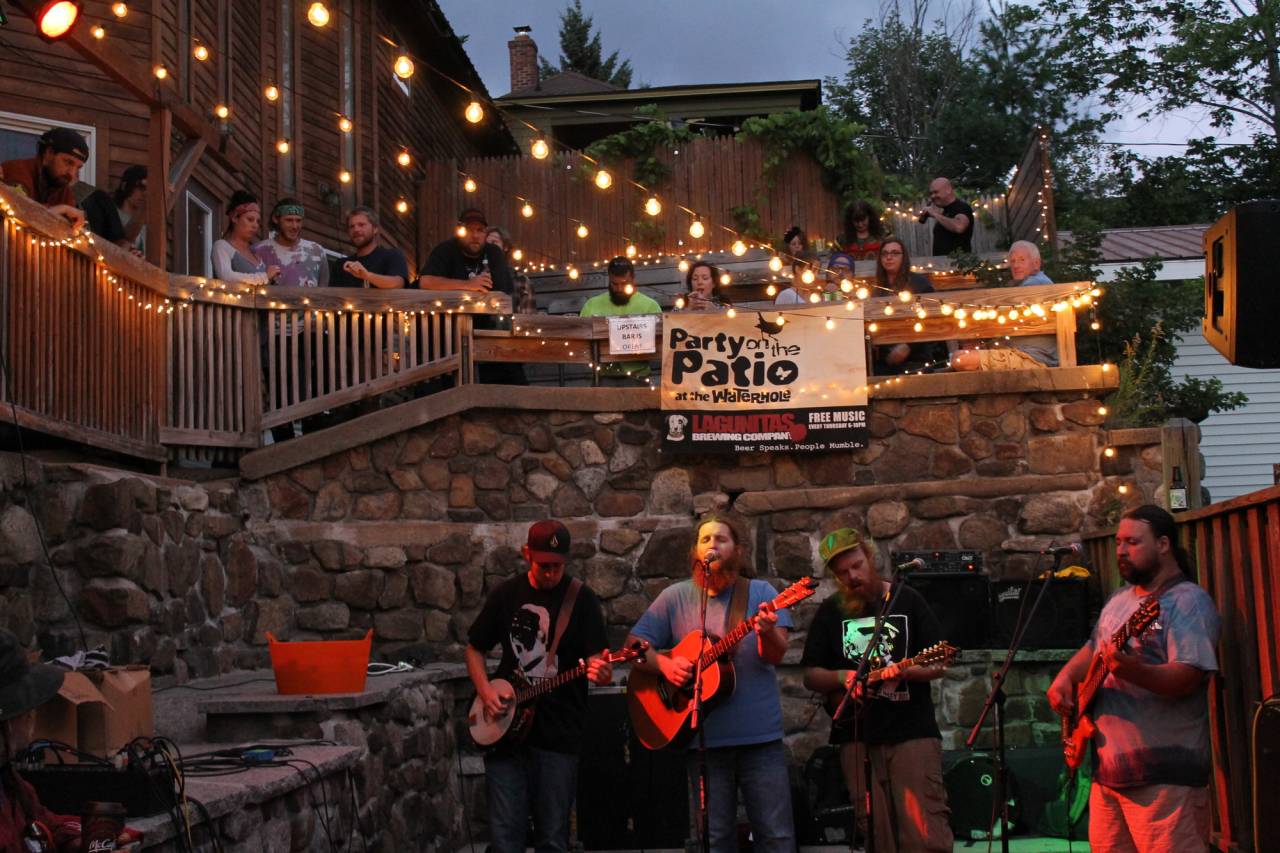
10. The “Batman Signal” of Saranac Lake
Look up the next time you’re near the Saranac Lake Town Hall, you might spot something a little unusual. Perched on the roof is a traffic light, and while it might seem out of place, it comes with a local legend that gives it superhero-level charm. According to village lore, this rooftop traffic light once served as a kind of emergency signal, a beacon used to alert off-duty police officers that they were needed. If the light turned on, it was their cue to call in or head to the station, much like a small-town version of Gotham’s famous bat signal.
While it's no longer in use today, the light remains a quirky symbol of Saranac Lake’s resourcefulness, and its flair for the unexpected. Keep an eye out as you explore downtown, it’s one of those hidden-in-plain-sight details that makes this village so delightfully unique.
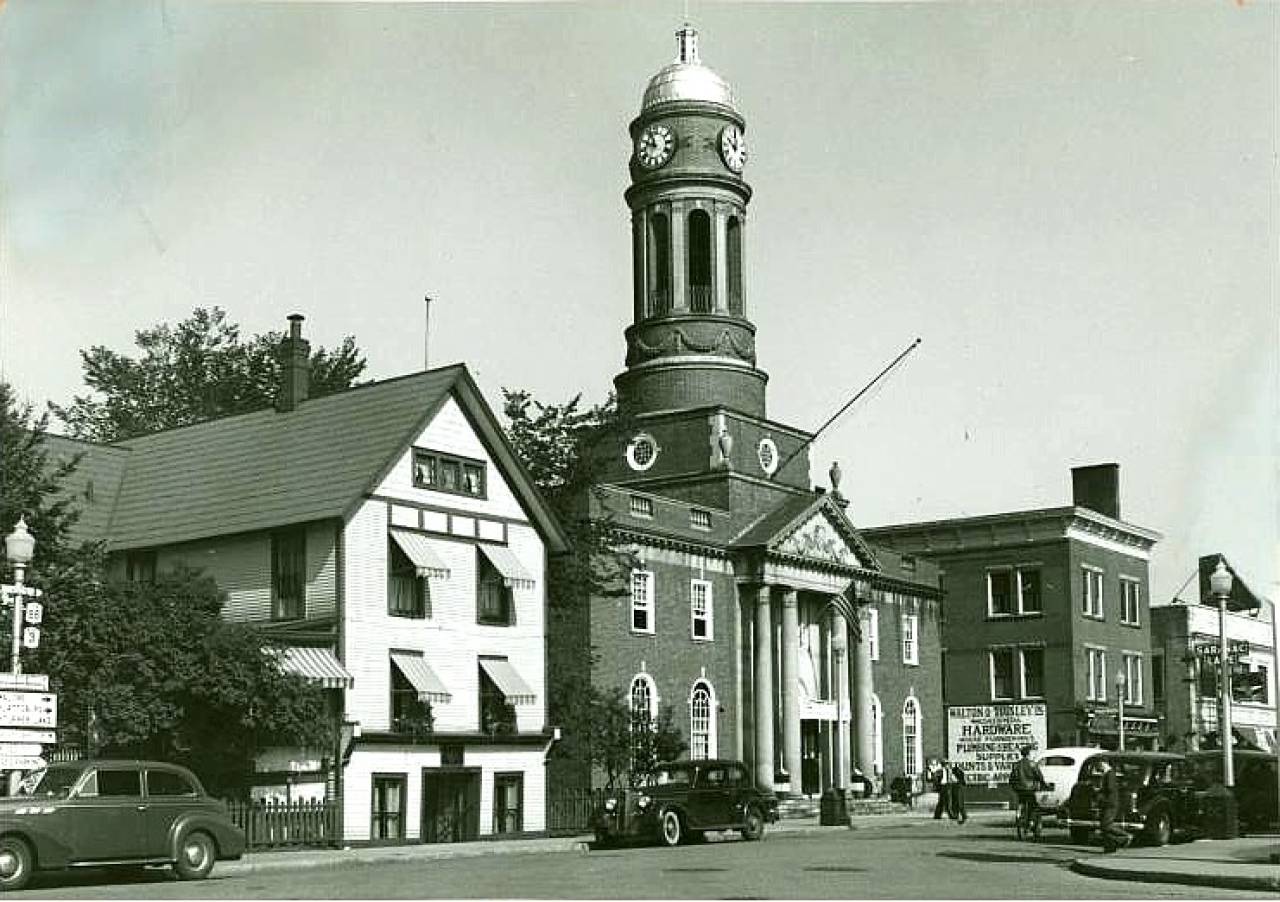
Plan your next trip
Saranac Lake’s past isn’t just preserved in museums, it’s written into the streets, the architecture, and even the air. Take a historical walking tour to explore the stories behind cure cottages and rum-running hideouts, or book a stay in one of the legendary cabins once used by President Coolidge or Mark Twain for a truly immersive throwback experience.
If your timing’s right, plan your trip around the Saranac Lake Winter Carnival, when the town fully embraces its quirky spirit with ice palaces, lawn chair parades, and rotating themes like “Cartoonival.” Or catch one of the village’s many offbeat arts events, because here, history and creativity aren’t relics, they’re part of everyday life.















Packages and Promotions
Valid
-
Valid Nov. 23
- Feb. 28
weekly on Sunday until November 23, 2026
Industry Night Sundays at Bitters and Bones
Industry Night Sundays - Bitters & Bones | 8–11 PM. All restaurant, bar, and hotel industry workers enjoy: 50% off draft beers, 50% off well...
Valid Apr. 1
- Jan. 30
Valid Jan. 21
- Jan. 21
Pet Getaway
Voco Saranac Lake
Your dog deserves an Adirondack getaway too. Book our pet friendly hotel near Lake Placid welcomes every member of your crew. Book our Pet Package...
